
AUCTION AT SOTHEBY’S LONDON The Sven Gahlin Collection
Sep 04, 2015 Art Auction
As part of India and Islamic Art Week, which runs from 2nd to 7th October, Sotheby’s presents the landmark single-owner sale, The Sven Gahlin Collection. The collection comprises 157 exquisite lots, with an unparalleled group of finely painted Indian miniature painting at its core.
Ranging from the 16th to the 19th centuries and encompassing the Mughal, Deccani and Rajput courts, as well as Company School painting from the period of the British Raj, these works are remarkable for their distinguished provenance and exhibition history. Many of the paintings are signed by or attributed to royal court artists, commissioned by the elite of the age, providing a glimpse into the refinement, power and privilege of courtly life.
The collector Sven Gahlin is renowned for his connoisseurship and began actively collecting in the 1960s; the majority of this outstanding collection has not been seen on the market for decades. The collection will go on show in its entirety for the first time at Sotheby’s New Bond Street Galleries in London from 2nd October, ahead of the auction on 6th October. Estimates range from £500 up to £80,000.
This painting, depicting Mughal royalty, is a magnificent example of Deccani art, combining the intense yet dreamlike character of Deccani painting with the regal formality of the Mughal school of painting. This piece was exhibited in London at the Hayward Gallery in 1982.
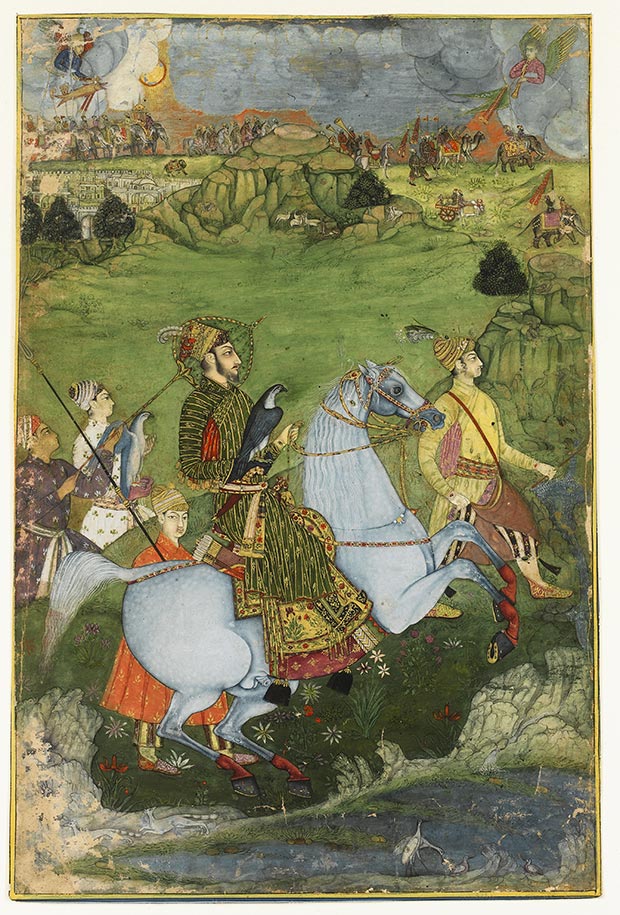 A prince holding a falcon and galloping through a rocky landscape, Deccan, Golconda, circa 1680-1700. Gouache heightened with gold on paper, with narrow blue and yellow borders, 29.9 x 19.8cm / Courtesy of Sotheby's
A prince holding a falcon and galloping through a rocky landscape, Deccan, Golconda, circa 1680-1700. Gouache heightened with gold on paper, with narrow blue and yellow borders, 29.9 x 19.8cm / Courtesy of Sotheby's
The style of this elegant miniature of a piebald horse standing next to a spear ultimately derives from Persian and Central Asian painting of the late-fifteenth and earlyâ€sixteenth century, transformed in an Indian context.
 A piebald stallion, Deccan, Ahmadnagar or Bijapur, circa 1560-80. Gouache heightened with gold on paper, ruled in gold, reverse with remnants of half an album page, 11.8 by 19.2cm / Courtesy of Sotheby's
A piebald stallion, Deccan, Ahmadnagar or Bijapur, circa 1560-80. Gouache heightened with gold on paper, ruled in gold, reverse with remnants of half an album page, 11.8 by 19.2cm / Courtesy of Sotheby's
This miniature is an important example of Mughal ceremonial court art in the early eighteenth century. It was probably painted as an accession portrait and depicts the Emperor Bahadur Shah I (r.1707-12) receiving his four sons while seated on the Peacock Throne. It is attributable to Bhavanidas, the leading artist at the Mughal court at this time.
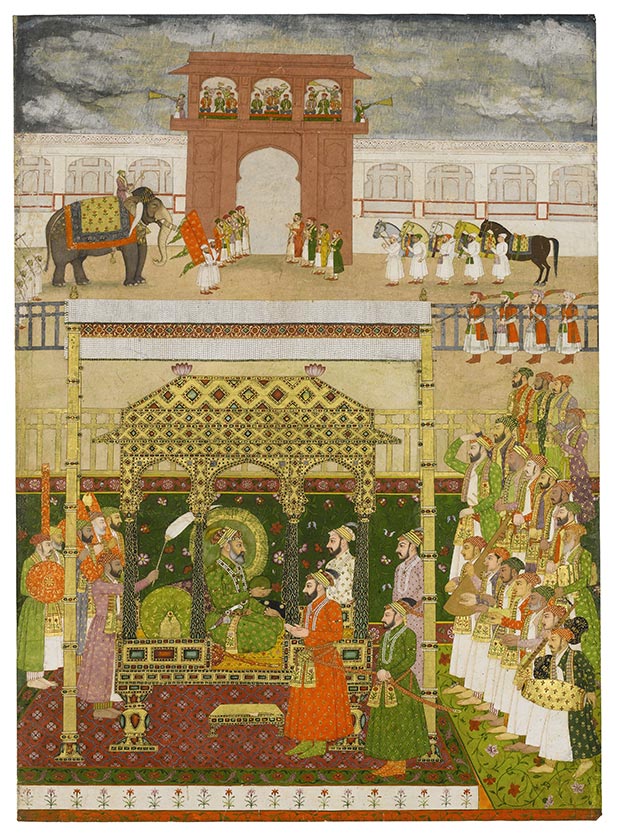 The Emperor Bahadur Shah I enthroned, attributable to Bhavanidas, Mughal, circa 1707. Gouache heightened with gold on paper, 42.2 by 30.5cm / Courtesy of Sotheby's
The Emperor Bahadur Shah I enthroned, attributable to Bhavanidas, Mughal, circa 1707. Gouache heightened with gold on paper, 42.2 by 30.5cm / Courtesy of Sotheby's
This painting of a durbar of the Emperor Akbar Shah II (r.1806-37) is one of the earliest known versions of this subject and is attributed to the favourite court painter of the time, Ghulam Murtaza Khan Musavvir. Akbar Shah’s four sons are shown standing immediately in front of this artist's version of the peacock throne: notably, Abu Zafar Siraj al-Din Muhammad, standing to his right, the heir apparent, who was to become the last Mughal emperor as Bahadur Shah II. Bahadur Shah’s life is retold in William Dalrymple’s 'The Last Mughal: The Fall of Delhi, 1857'.
 The emperor Akbar Shah II (r.1806â€37) in Durbar, attributable to Ghulam Murtaza Khan Musavvir, Mughal, Delhi, ca. 1810 / Courtesy of Sotheby's
The emperor Akbar Shah II (r.1806â€37) in Durbar, attributable to Ghulam Murtaza Khan Musavvir, Mughal, Delhi, ca. 1810 / Courtesy of Sotheby's
This work, depicting a Black-Rumped Flameback Woodpecker (Dinopium benghalense), has been exhibited at the British Museum and widely published. It is attributed to the great Mughal master Mansur, the most skilled and illustrious of the Indian painters of fauna and flora in the seventeenth century.
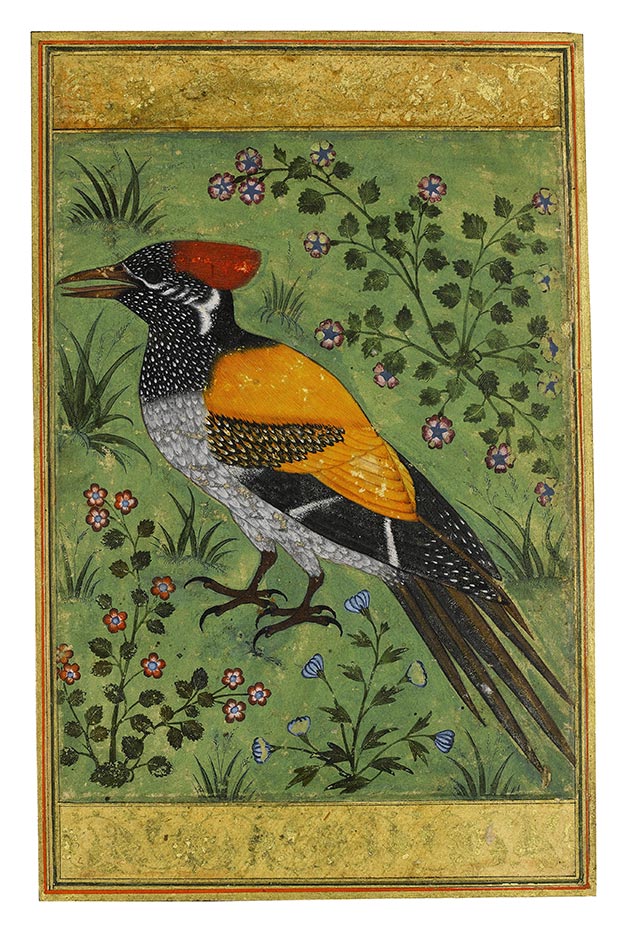 A yellow-backed woodpecker, attributed to Mansur, Mughal, circa 1585-90. Gouache on paper, laid down on an album page, borders above and below with scrolling gold flowers, outer margins filled with leafy gold vegetation, reverse with 4 lines of large nasta'liq calligraphy. Painting: 16.7 by 12.9cm. Leaf: 31.7 by 20.1cm / Courtesy of Sotheby's
A yellow-backed woodpecker, attributed to Mansur, Mughal, circa 1585-90. Gouache on paper, laid down on an album page, borders above and below with scrolling gold flowers, outer margins filled with leafy gold vegetation, reverse with 4 lines of large nasta'liq calligraphy. Painting: 16.7 by 12.9cm. Leaf: 31.7 by 20.1cm / Courtesy of Sotheby's
The album to which this painting once belonged, known as the Small Clive Album, was acquired during Lord Clive's last visit to India between 1765 and 1767, probably as a gift from Shuju' al-Daula, Nawab of Oudh (r.1754-75). The majority of the album, containing 56 Mughal miniatures of seventeenth and eighteenth century origin, was sold by the Earl of Powis, his direct descendant, at Sotheby's in 1956.
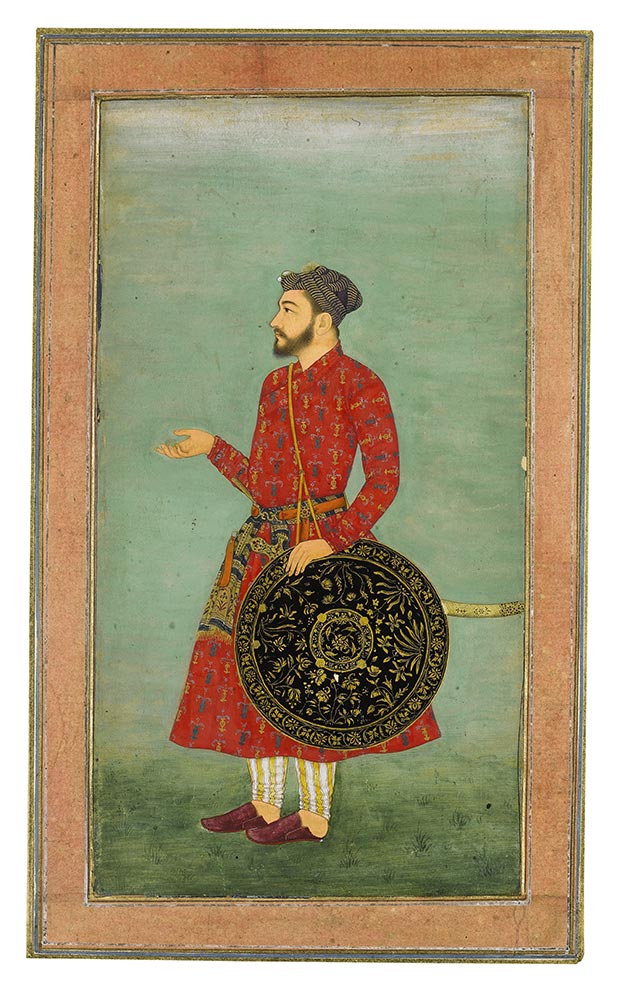 A portrait of Khan Zaman with shield and sword, attributable to Bichitr, Mughal, circa 1630 / Courtesy of Sotheby's
A portrait of Khan Zaman with shield and sword, attributable to Bichitr, Mughal, circa 1630 / Courtesy of Sotheby's
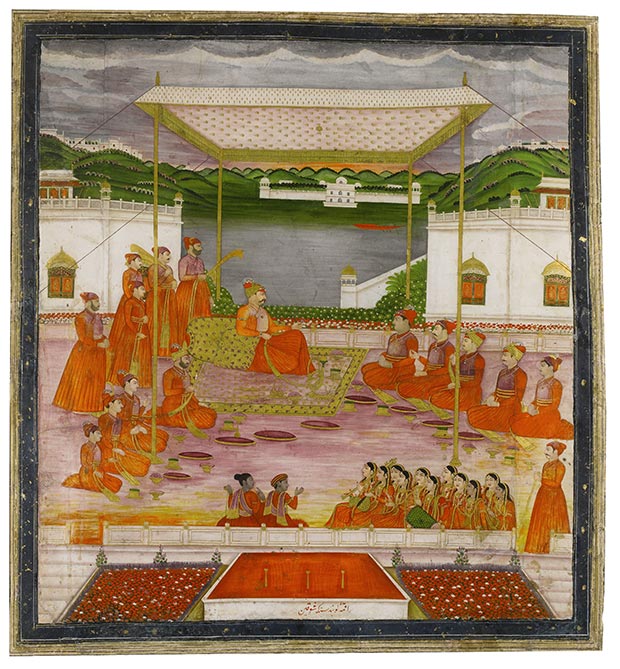 Shuja' al-Daula, Nawab of Oudh, holding court during Holi, signed by Gobind Singh Shauquin, Lucknow, circa 1760 / Gouache heightened with gold on paper, signed in nasta’liq script in red at bottom centre 'raqam-e Gobins Singh Shaukin', laid down on an album page with blue inner borders, mounted on stout paper, framed. Painting: 38.3 by 35.1cm. Leaf: 42.7 by 39.3cm / Courtesy of Sotheby's
Shuja' al-Daula, Nawab of Oudh, holding court during Holi, signed by Gobind Singh Shauquin, Lucknow, circa 1760 / Gouache heightened with gold on paper, signed in nasta’liq script in red at bottom centre 'raqam-e Gobins Singh Shaukin', laid down on an album page with blue inner borders, mounted on stout paper, framed. Painting: 38.3 by 35.1cm. Leaf: 42.7 by 39.3cm / Courtesy of Sotheby's
.jpg) A Mughal carved ivory-hilted dagger with ram's head, 17th century / The walrus ivory hilt carved in the form of a ram's head with finely carved details, including horns and hair-locks, the double-edged steel blade with reinforced tip and double fullers with median ridge, Indian armoury mark with number punched on both sides at forte, 49.5cm / Courtesy of Sotheby's
A Mughal carved ivory-hilted dagger with ram's head, 17th century / The walrus ivory hilt carved in the form of a ram's head with finely carved details, including horns and hair-locks, the double-edged steel blade with reinforced tip and double fullers with median ridge, Indian armoury mark with number punched on both sides at forte, 49.5cm / Courtesy of Sotheby's
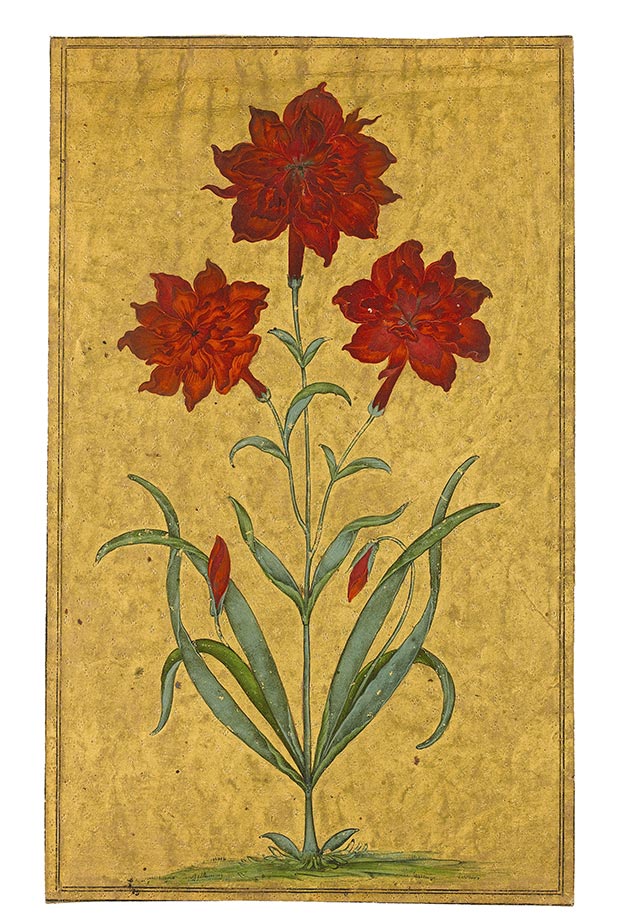 A carnation, attributed to Haider 'Ali and Ibrahim Khan, Deccan, Bijapur, circa 1625-50 / Gouache against a pricked gold background on paper, ruled in black 20 x 12.1 cm / Courtesy of Sotheby's
A carnation, attributed to Haider 'Ali and Ibrahim Khan, Deccan, Bijapur, circa 1625-50 / Gouache against a pricked gold background on paper, ruled in black 20 x 12.1 cm / Courtesy of Sotheby's
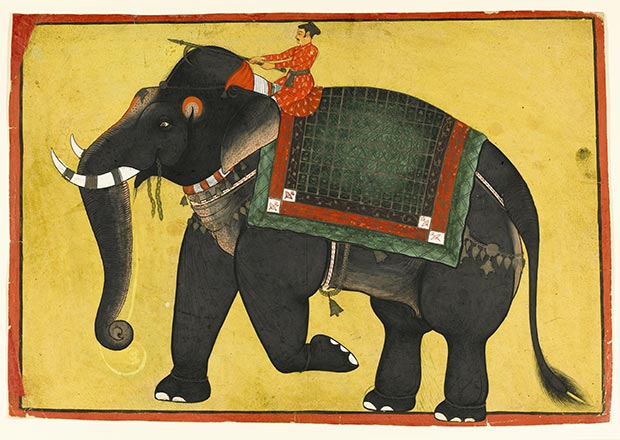 Raja Riding on a Bull Elephant, Rajasthan, Isarda, attributed to Wajid, circa 1685 / Courtesy of Sotheby's
Raja Riding on a Bull Elephant, Rajasthan, Isarda, attributed to Wajid, circa 1685 / Courtesy of Sotheby's
Comments
Add a comment